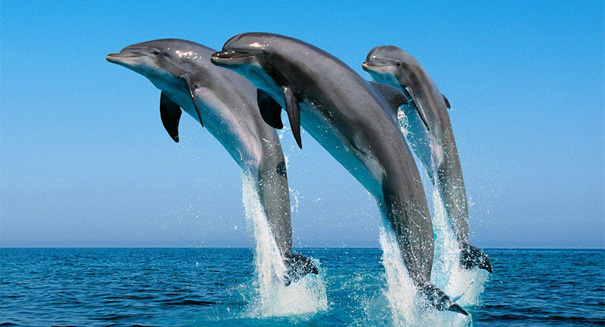
A new dolphin is discovered.
Just when you think we can’t possibly discover any more animals—at least the big mammals—any more, Mother Nature reminds us how silly we are once again. Hiding in plain site was a recently discovered species of humpback dolphins, just hanging out in waters just off the northern shores of Australia.
As if missing this species for so long weren’t silly enough, its discovery seems almost appropriate. Scientists from the Wildlife Conservation Society were trying to settle an argument that had been part of the marine mammal researcher culture for decades.
“For many years, there’s been this debate about the number of species of humpback dolphins,” said Howard Rosenbaum, director of the WCS ocean giants program. Scientists have proposed everything from two to four species within the group’s genus Sousa.
No one had been able to support or disprove that argument definitively and so settled on the two known species: the Indo-Pacific humpback dolphin and the Atlantic humpback dolphin. This was 10 years ago.
Rosenbaum remained sure more existed and so decided to begin collecting physical and genetic samples from humpback dolphin populations in all their habitat and migratory ranges, which include West Africa, Pacific Ocean, off the coast of Australia and the Indian Ocean.
When determining the genealogy of a species, scientists generally just look at the mitochondrial DNA (instead of the cell’s DNA), which is passed on only through the mother and is easier to track. However, Martin Mendez, assistant director for the Latin American and Caribbean program at WCS chose to look at the DNA from both the mitochondria and the rest of the cell. Combine that with the physical characteristics—including nose length and number and position of the teeth—and Mendez was starting at four totally different species of humpback dolphins.
Three of the species have been named, as they were ones researchers had proposed decades ago. The fourth one, however, remains unnamed and “was a pleasant surprise,” according to Rosenbaum. While this is a new species is new to science, it’s not as though the scientists had not known about the group of dolphins.
It’s rare to find a new species of mammal, said Mendez. “[But] it’s also not crazy to find new species when you’re using the kind of [genetic] information we’re using.
“One of the reasons we’re finding new species is because we’re finding new tools,” he explained. “Genetics opens a new window into these kinds of questions.”
Leave a Reply